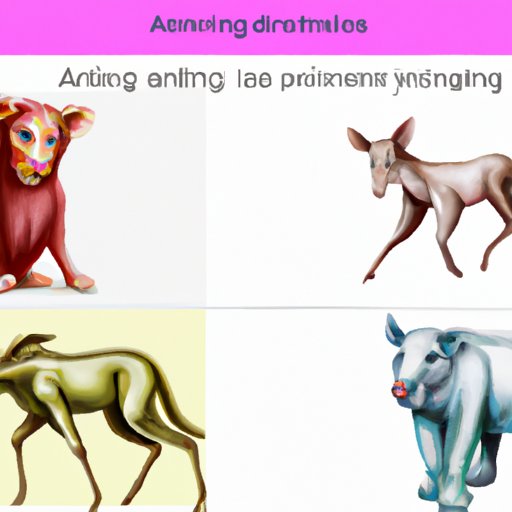
Introduction
Drawing animals can be a fun and rewarding creative outlet, but many people struggle with getting started. Whether you’re a beginner or just looking to improve your skills, this article will provide you with a step-by-step guide to successfully drawing animals. We’ll cover the basics of animal drawing and provide tips and techniques to help you bring your animals to life.
Step-by-Step Guide
Before you start, it’s important to have a structured approach to your animal drawing. Begin by gathering reference photos of the animal you wish to draw. This will help you to understand the anatomy, shapes, and textures of the animal. Then, follow these simple steps:
1. Start with basic shapes: Begin your drawing with a few simple shapes that represent the basic body parts of your animal. For example, a rabbit may be drawn using a circle for the head, an oval for the body, and rectangles for the legs.
2. Add in details: Once you have the basic shapes in place, it’s time to add in the details. Add in the contours of the animal, such as the curve of the spine, the shape of the ears, and the angle of the legs.
3. Refine the details: Refine the details by adding more specific features such as the eyes, nose, and fur or feathers.
4. Add shading: Shading is key to making your animal look more realistic. Start by shading in the darkest areas and then work gradually toward the lighter areas.
Different Animals, Different Techniques
Each animal requires a slightly different approach when it comes to drawing. For example, an elephant may involve more emphasis on shading, while a bird may focus more on feathers and wings. Here are some key techniques to keep in mind when drawing different animals:
– Shading: Shading can add depth and dimension to your animal and help to provide a more realistic look.
– Cross-hatching: Cross-hatching is great for creating texture on feathers, fur, and scales.
– Stippling: Stippling can be used in combination with other techniques to create subtle tone and texture.
From Sketch to Finished Product
Once you have your rough sketch in place, it’s time to add in the finer details that will make your drawing look more realistic. Here are some tips to help you take your sketch to a finished product:
1. Add texture: Pay attention to the texture of the animal and how it may differ in different areas of the animal’s body. For example, a cat’s fur will be smoother on its face and legs, but more tousled or fluffy on its back and tail.
2. Shade carefully: Shade in areas that are darker or have more contrast first, then gradually work your way up to the lighter areas.
3. Don’t forget the eyes: The eyes are what will bring your animal to life. Be sure to add in the pupils, highlights, and any color variations that are present.
Tips from a Pro
We spoke with a professional artist who specializes in animal drawing to get insight into their approach. The artist provided these useful tips for beginners:
– Focus on basic shapes
– Build up layers of shading
– Look for reference photos to study
– Practice regularly
– Experiment with different techniques and styles
Get Creative
Drawing animals can be a fun way to use your imagination and creativity. Here are a few drawing prompts to get you started:
– Create a hybrid animal by combining the features of two different animals.
– Draw your pet or your favorite animal in a whimsical cartoon style.
– Draw the same animal in three different art styles, such as realistic, cartoon, and abstract.
Conclusion
Drawing animals takes time and practice, but with the right approach, anyone can improve their skills. By following a step-by-step guide and experimenting with different techniques and styles, you can bring your animal drawings to life. Remember to practice regularly, focus on the basics, and have fun.





